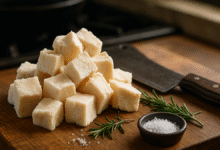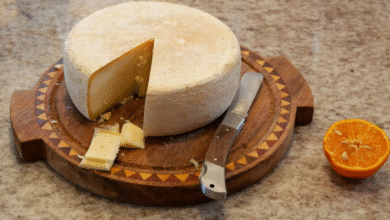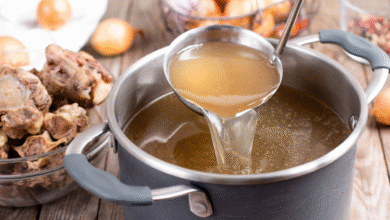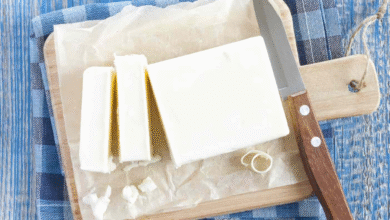Eel Sauce: A Complete Guide to Flavor, Uses, and Culinary Secrets
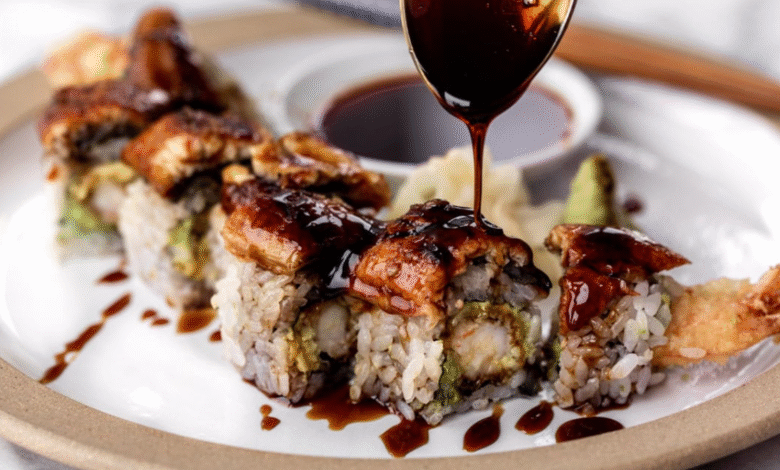
Discover everything about eel sauce—its flavor, history, uses in Japanese cuisine, easy recipes, and expert tips. Learn how to make eel sauce at home and elevate your dishes naturally.
Introduction to Eel Sauce
Eel sauce is one of those condiments that quietly steals the spotlight. The moment you drizzle it over sushi or brush it across grilled fish, it transforms the dish into something richer, deeper, and unforgettable. Despite its name, eel sauce doesn’t actually contain eel. Instead, it was traditionally created as a glaze to complement grilled eel in Japanese cuisine. Over time, the sauce gained a life of its own, spreading into modern kitchens and global restaurants as a versatile addition to countless meals.
For many people new to Japanese flavors, eel sauce becomes an instant favorite. It’s savory, slightly sweet, and loaded with umami—what many chefs call the “fifth taste.” Its sticky, glossy texture makes it perfect not just for seafood but also for chicken, beef, vegetables, and even fried snacks. Once you learn about its roots and versatility, you might wonder how your kitchen ever survived without it.
The Origins of Eel Sauce
The history of eel sauce goes hand in hand with the cultural significance of grilled eel in Japan. Eel, or “unagi,” has been considered a delicacy for centuries, often eaten during hot summer months to boost stamina. To enhance the natural richness of unagi, chefs crafted a special glaze—thick, caramelized, and bursting with flavor. That glaze eventually became known as eel sauce.
Traditional eel sauce was made by reducing soy sauce, mirin (a sweet rice wine), and sugar into a glossy reduction. When brushed onto freshly grilled eel, the sauce seeped into the meat, balancing its fatty richness with sweet and savory notes. From there, it spread to other dishes, proving so delicious that diners requested it even when they weren’t eating eel.
What’s fascinating is how eel sauce became an international star. Sushi restaurants worldwide began offering it as a standard topping or drizzle. In some places, it’s even bottled and sold in grocery stores. Its evolution shows how culinary traditions can expand far beyond their origins while still retaining their cultural soul.
What Exactly is Eel Sauce?
At its core, eel sauce is a Japanese condiment made from soy sauce, mirin, sugar, and sometimes sake. The mixture is simmered until it thickens into a glossy glaze that clings beautifully to food. The sauce is rich in umami, a savory flavor profile that makes everything it touches more satisfying.
Despite the name, there is no eel in eel sauce. It was simply developed as the perfect partner for grilled eel dishes. That’s why some chefs and cookbooks call it “unagi no tare” or just “tare.” In Japanese, “tare” is a catch-all term for sauces used in grilling, dipping, and seasoning. This makes eel sauce part of a broader family of Japanese glazes that also include sauces for yakitori, ramen, and teriyaki.
Eel sauce stands out because of its balance. Unlike teriyaki, which leans heavily on sweetness, eel sauce combines salty depth with just enough sugar to round out the edges. Its velvety thickness makes it great for drizzling, brushing, or even dipping. Whether you’re enjoying sushi rolls, tempura, or roasted meats, eel sauce brings that unmistakable restaurant-quality finish.
The Flavor Profile of Eel Sauce
The best way to describe eel sauce is “deeply savory with a kiss of sweetness.” The soy sauce delivers saltiness and umami, while the mirin and sugar add warmth and caramelized undertones. Together, they create a harmony that feels both indulgent and balanced.
When heated, eel sauce takes on an almost smoky character, especially when brushed onto grilled foods. The sugars caramelize on the surface, leaving behind a glossy sheen and subtle crunch. This transformation is part of why it pairs so well with eel, which is naturally fatty and rich. The sauce cuts through that heaviness while amplifying its flavor.
What makes eel sauce so appealing is its versatility across flavor profiles. On sushi, it contrasts beautifully with the freshness of raw fish. On fried foods, it balances crispiness with a sticky sweetness. On meats, it provides that glossy, restaurant-style glaze you’d expect from high-end cooking. It’s truly a sauce that adapts, no matter the dish.
Common Uses of Eel Sauce in Cuisine
Eel sauce is best known in sushi restaurants, but its uses go far beyond that. If you’ve enjoyed a dragon roll, unagi nigiri, or specialty sushi topped with a dark drizzle, chances are you’ve already tasted it. The sauce not only enhances the sushi but also helps hold toppings together, adding texture as well as flavor.
Outside of sushi, eel sauce is a star on grilled and roasted dishes. Brush it onto chicken wings, ribs, or salmon before roasting, and you’ll end up with a glossy, flavorful finish. It also makes an excellent dipping sauce for tempura or even French fries, turning a simple snack into a gourmet bite.
Chefs often get creative with eel sauce, incorporating it into fusion dishes. Imagine it as a glaze for burgers, a drizzle over roasted vegetables, or even mixed into stir-fries. Once you have a jar of eel sauce in your kitchen, you’ll find endless excuses to experiment with it.
Nutritional Perspective on Eel Sauce
While eel sauce is undeniably delicious, it’s also important to understand its nutritional makeup. Since it is made from soy sauce, sugar, and mirin, it tends to be high in sodium and sugar. A single tablespoon can pack more sodium than some people expect, making moderation key.
That being said, eel sauce doesn’t contain any animal products, so it’s vegetarian-friendly. It’s also gluten-free if made with tamari or gluten-free soy sauce. For those watching their diets, there are easy ways to make a lighter version at home—by reducing the sugar, using low-sodium soy sauce, or adding natural sweeteners like honey.
The good news is that eel sauce is typically used sparingly. A drizzle here, a brush there, and you can enjoy its flavor without overloading on calories. Like most condiments, it’s less about eating large amounts and more about enhancing the overall dish.
How to Make Eel Sauce at Home
Making eel sauce at home is surprisingly simple. With just a few pantry staples, you can create a batch that rivals what you’d find in restaurants. The key is simmering the ingredients slowly until they thicken into a glaze.
A classic recipe includes soy sauce, mirin, sugar, and a splash of sake. Combine them in a saucepan and let the mixture reduce over low heat, stirring occasionally. After about twenty minutes, the sauce should be glossy and slightly thickened. Once cooled, it’s ready to use.
One of the best parts about making eel sauce at home is customization. Want it sweeter? Add more sugar or a spoonful of honey. Prefer it saltier? Increase the soy sauce. Craving more complexity? Add garlic, ginger, or even chili flakes for a spicy kick. Homemade eel sauce is endlessly adaptable to your taste.
Comparing Eel Sauce with Other Japanese Sauces

Japanese cuisine is full of iconic sauces, and eel sauce often gets compared to teriyaki, ponzu, or yakitori glaze. While they share some similarities, each has its own unique qualities.
- Teriyaki Sauce: Sweeter and often thicker, teriyaki uses sugar and sometimes cornstarch for extra body. Eel sauce is less sweet and more balanced in flavor.
- Ponzu Sauce: Ponzu is citrusy and light, made with soy sauce, rice vinegar, and yuzu. Unlike eel sauce, it’s not thick or sticky and works better as a dipping sauce.
- Yakitori Tare: Very similar to eel sauce but tailored for skewered chicken, this sauce often includes chicken bones simmered in the mix for added richness.
What makes eel sauce stand out is its versatility. It bridges the gap between sweet and savory without overwhelming the dish. This balance makes it just as suitable for sushi rolls as it is for roasted meats or vegetables.
A Quick Table: Eel Sauce vs. Other Sauces
| Sauce Type | Flavor Profile | Common Use | Thickness | Key Ingredients |
|---|---|---|---|---|
| Eel Sauce | Savory, sweet, umami | Sushi, grilled eel | Medium-thick | Soy sauce, mirin, sugar |
| Teriyaki | Sweet, slightly salty | Chicken, beef, stir-fry | Thick | Soy sauce, sugar, sake |
| Ponzu | Tangy, citrusy, light | Dipping for sashimi | Thin | Soy sauce, citrus, vinegar |
| Yakitori Tare | Savory, smoky, slightly sweet | Chicken skewers | Medium-thick | Soy sauce, mirin, bones |
Expert Tips for Cooking with Eel Sauce
One trick chefs use is to apply eel sauce at the end of cooking, especially on grilled or roasted items. Since it contains sugar, applying it too early can cause burning. A light brush in the final few minutes of cooking creates the perfect caramelized glaze.
Another expert tip is pairing eel sauce with contrasting flavors. Use it on something spicy, like a jalapeño-topped roll, to balance the heat. Or drizzle it over creamy dishes like avocado sushi to cut through the richness. Its adaptability is what makes it a staple in both traditional and modern kitchens.
Finally, don’t be afraid to experiment with unconventional pairings. Some chefs use eel sauce as a burger glaze, a dipping sauce for onion rings, or even a topping for roasted Brussels sprouts. The secret is moderation: a little drizzle goes a long way.
Frequently Asked Questions About Eel Sauce
Is eel sauce made from eel?
No, eel sauce does not contain eel. It was created to complement grilled eel but is made from soy sauce, sugar, and mirin.
Is eel sauce vegetarian?
Yes, the traditional recipe is vegetarian. However, always check labels when buying store-bought versions, as some may include fish-based additives.
Does eel sauce contain gluten?
Standard eel sauce contains soy sauce, which often has wheat. For a gluten-free option, use tamari or gluten-free soy sauce when making it at home.
How long does eel sauce last?
Homemade eel sauce can last up to two weeks in the refrigerator if stored in a sealed container. Store-bought versions usually have preservatives and last longer.
Can I substitute eel sauce in recipes?
Yes, teriyaki sauce can work in a pinch, though it’s usually sweeter. You can also use a mix of soy sauce and honey for a quick substitute.
What dishes taste best with eel sauce?
Sushi rolls, grilled fish, chicken wings, roasted vegetables, and even fried snacks taste incredible with eel sauce.
Conclusion
Eel sauce may have humble origins as a glaze for grilled eel, but today it’s one of the most versatile condiments in Japanese cuisine. Its perfect balance of sweet and savory flavors makes it a go-to topping for sushi, grilled meats, roasted vegetables, and beyond. Whether you enjoy it in restaurants or make it at home, eel sauce has a way of elevating dishes into something special.
Once you’ve tried cooking with it, you’ll see why chefs and home cooks alike keep it stocked in their kitchens. It’s not just a sauce—it’s a flavor experience that transforms everyday meals into culinary highlights.
